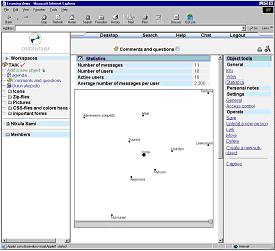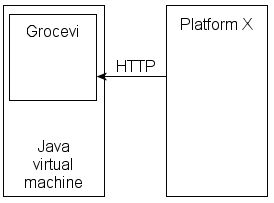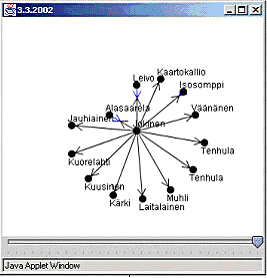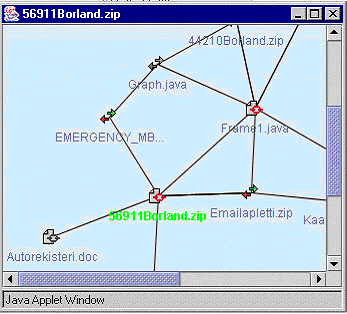
![]() Front Page
Front Page
RESEARCH TOPICS
![]() Automatic and Semi-automatic Essay Grading
Automatic and Semi-automatic Essay Grading
![]() Evaluation of the Natural Language Parsers
Evaluation of the Natural Language Parsers
![]() Plagiarism Detection in Software Projects
Plagiarism Detection in Software Projects
![]() Visualization of the Social Interaction in Virtual Environments
Visualization of the Social Interaction in Virtual Environments
WHO & WHAT
![]() People & Alumni
People & Alumni
![]() Publications
Publications
LINKS
![]() Educational Technology @ Department of Computer Science
Educational Technology @ Department of Computer Science
![]() Department of Computer Science in University of Joensuu
Department of Computer Science in University of Joensuu
FUNDERS
![]() National Technology Agency of Finland (TEKES)
National Technology Agency of Finland (TEKES)
![]() European Commission - Research Directorate
European Commission - Research Directorate
![]() Discendum
Discendum
![]() Karjalainen
Karjalainen
![]() Lingsoft
Lingsoft
![]() Tikka Communications
Tikka Communications
![]() Intranet (password required)
Intranet (password required)

The analysis of group interaction processes has become increasingly important in modern learning environments. These analyses are particularly useful in collaborative settings and learning scenarios which require interdisciplinary action to create holistic views and foster creative problem solving. Quite surprisingly, thus far, the versatile tools for visualizing the interaction process of a group have been mostly missing, even in Web-based environments. By visualizing the learning community as a network, the simultaneous collection, analysis, and reporting of inter-group and intra-group interaction becomes feasible. Grocevi, a group-interaction visualization tool, is designed to meet the need for interaction analysis tools in Web-based environments. Preliminary results concerning the effectiveness of Grocevi show that it has a positive effect on student communication practices because the students have to think about their respective roles in the discussion.
Our visualization tool Grocevi (Group processes visualizer) makes it possible to evaluate the quality of the interaction process. With Grocevi we can determine if a piece of dialogue is related or unrelated to the learning theme. We can evaluate whether students have functioned in the discussion as a whole group or formed smaller independent student networks. In the latter case, we can visualize the operation of those smaller groups. For example, we can visualize to what extent participants have operated individually or in interaction with the rest of the group. The system also attempts to give real-time information to its users about the structure of their interaction.

Figure 1: Integration as seen in the user interface of Discendum Optima.
Grocevi is developed in cooperation with Discendum Oy and it is integrated to the Discendum Optima learning platform (Fig. 1). Although it is integrated and developed with Discendum, it is own independent Java based graphical library which can be used in any Java supported learning platform (Fig. 2).

Figure 2: General architecture of integrating Grocevi to an existing learning platform X.
The environment, where this library has already been tested and used is a virtual learning environment, where this library visualizes the relations of the people participating the activities on discussion forum. With the help of visualization, it is easy for teacher to see, which people have actively participated on the discussions and which kind of group dynamics there are apparent among the people, that is who is actively discussing with whom (see Fig. 3).

Figure 3: Relations between certain student and her colleagues.
Another already realized usage for this kind of visualization library is the relational view on learning objects. With the help of library and learning environment, the students are able to construct relational representations over the learning objects available in the learning environment. For example, the student can bind some web pages or discussions or other documents to certain learning object available in learning environment. This way she constructs networks of knowledge not relying on only concepts, but the contents behind them (see Fig. 4).

Figure 4: Relations between certain files .
Moreover, the relations are subject to be animated with the help of the library. These animations can for example show the development of discussions on the discussion board on certain time scale. Such animation can be utilized for example when evaluating student activities over longer period of time. Animation would show, whether the discussion is going steadily or is it concentrated towards the beginning or the end of the time period under closer look.
Research Assistant Sami Nikula, firstname.lastname@cs.joensuu.fi